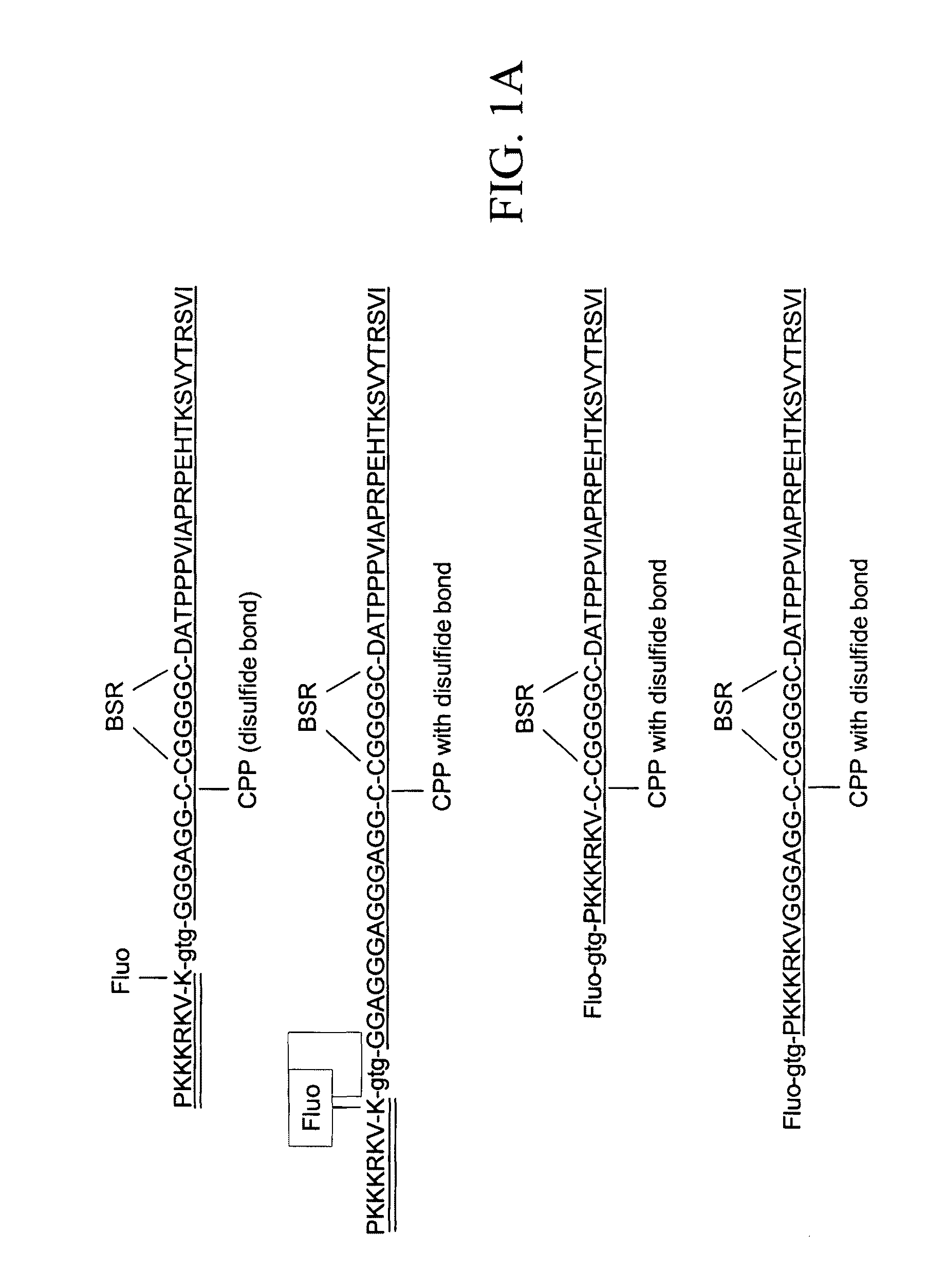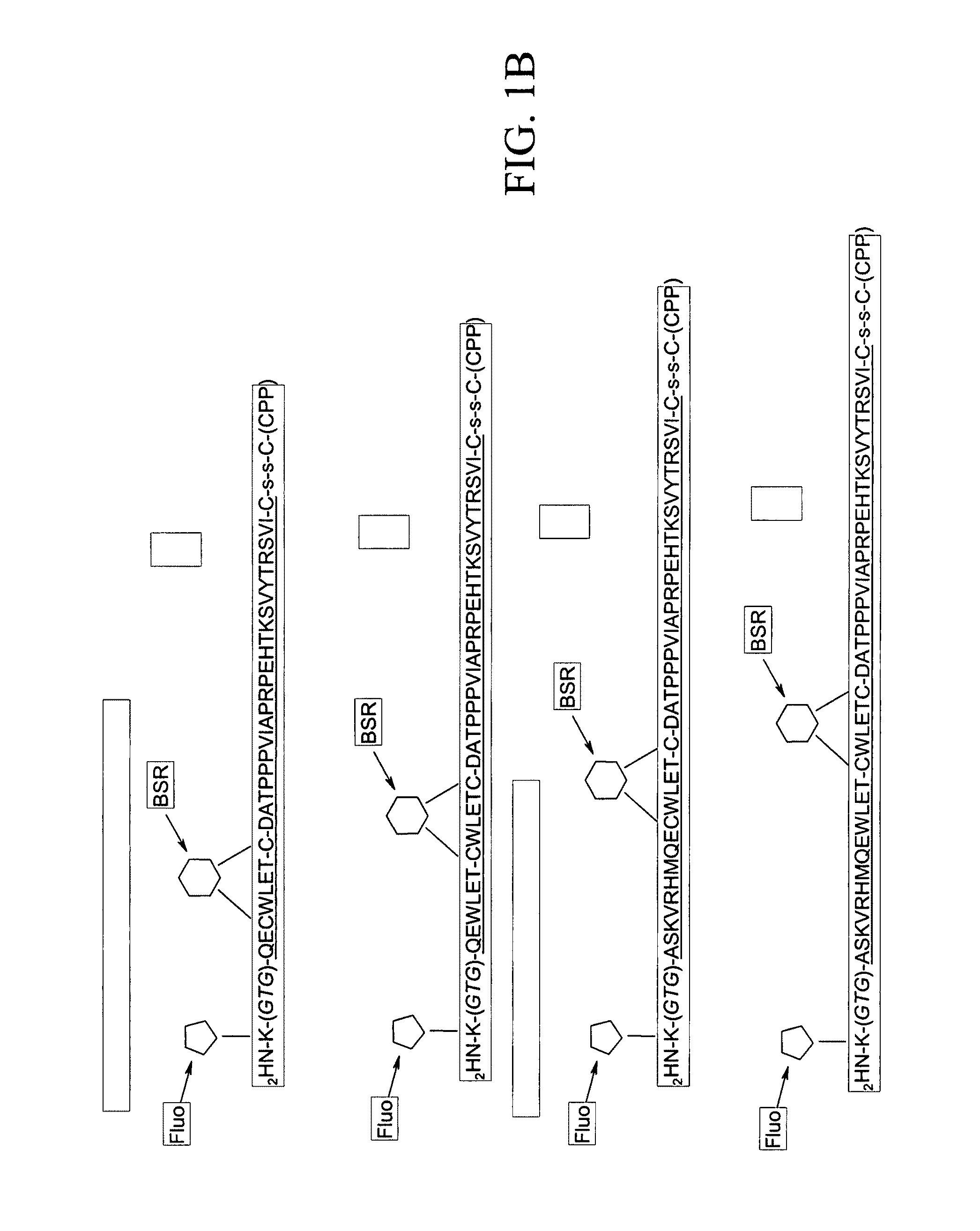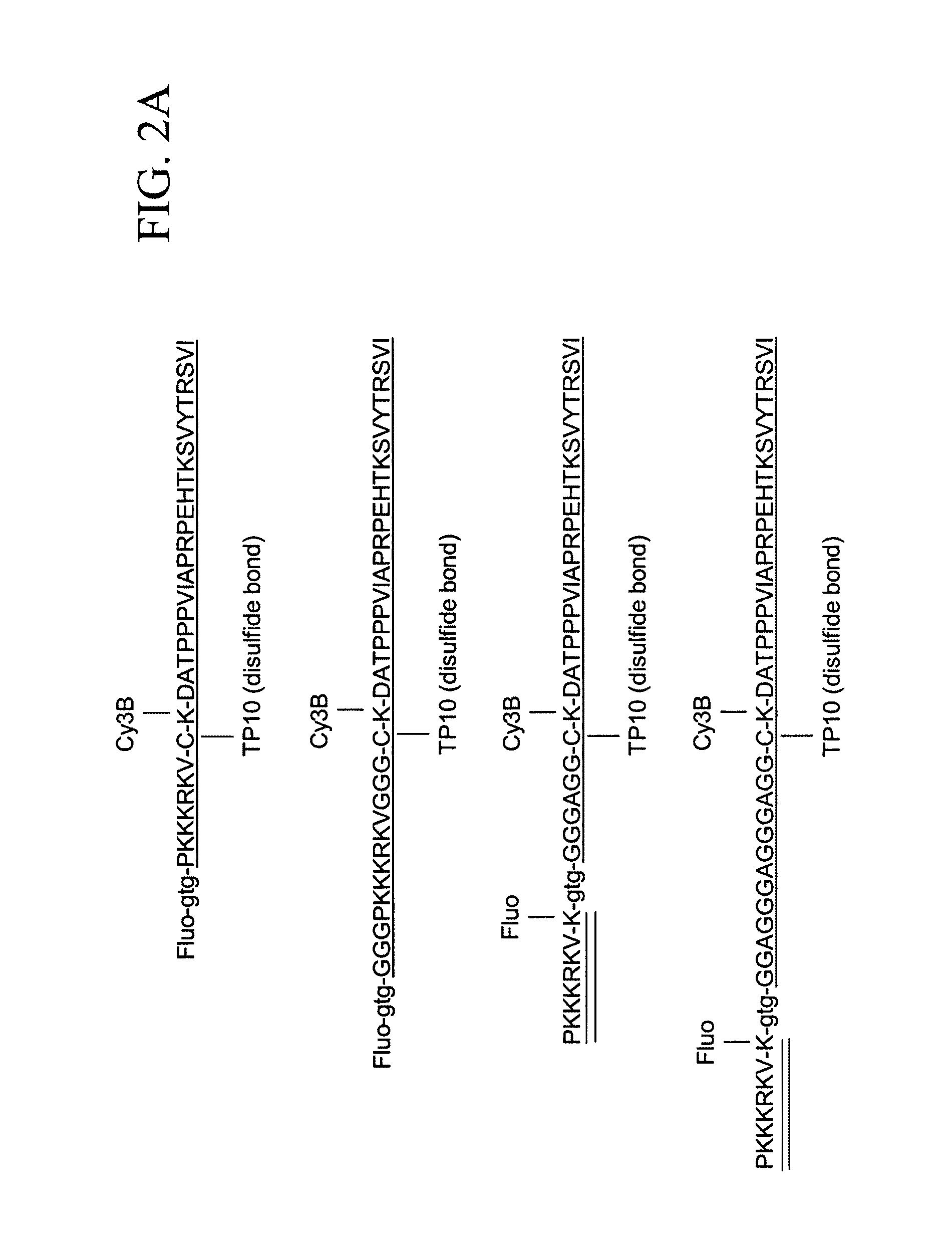Methods of detecting transcription
a transcription and sequence technology, applied in the field of methods of detecting transcription, can solve the problems of ineffective sequence approach and failure to provide any clues as to the function of the gene in question
- Summary
- Abstract
- Description
- Claims
- Application Information
AI Technical Summary
Benefits of technology
Problems solved by technology
Method used
Image
Examples
experimental examples
[0400]The invention is now described with reference to the following Examples. These Examples are provided for the purpose of illustration only and the invention should in no way be construed as being limited to these Examples, but rather should be construed to encompass any and all variations which become evident as a result of the teaching provided herein.
example 1
Chimeric RNA Polymerase-SH3-T7 Fusion Constructs
[0401]The chimeric RNA polymerase of the present invention is engineered such that the detector molecule can associate with the detector binding domain of the chimeric RNA polymerase as the polymerase synthesizes RNA from the DNA template. An alpha-PAK domain and the SH3 domain of beta-PIX have been previously shown to associate in vivo and to have high interaction affinity. Accordingly, the beta-PIX SH3 domain has been engineered into the N-terminal region of T7 RNA polymerase.
[0402]Five constructs have been created in which the SH3-domain from Rat beta-Pix (AF044673; gi2865595, nt 1-189; SEQ ID NO:2) is cloned to the amino terminus of T7 RNA polymerase (NC—001604, nt 3171-5822; SEQ ID NO:1). In construct 1 (C1), the last amino acid of the SH3 domain is immediately followed by the T7 amino acid sequence, in constructs 2-5 (C2-C5), a 10 amino acid spacer peptide, containing zero to three prolines, respectively has been inserted between...
example 2
Synthesis of a Detector Molecule
[0410]The present Example describes the synthesis of different detector molecules for in vitro and in vivo studies using the methods of the present invention. Solid phase peptide synthesis (SPPS) using a t-butoxycarbonyl(t-Boc) strategy was used to synthesize peptides used to generate detector molecules. Specifically, SPPS was used to synthesize a peptide (L604) containing a C-terminal thioester, a linker, a PNA trimer and fluorescein; a peptide (L605) containing an α-PAK sequence and TAMRA; a peptide (L564) containing a C-terminal thioester, a linker, PNA trimer and fluorescein; and a peptide (L575) containing an α-PAK sequence, TAMRA and an N-terminal Cys. All of the peptides were purified by HPLC and subsequently analyzed by MALDI-TOF mass spectrometry.
[0411]Three different PNA-Linker peptides were ligated to an alpha-Pak-domain containing peptide to generate detector molecules for in vitro studies (top three molecules depicted in FIG. 12). Two oth...
PUM
| Property | Measurement | Unit |
|---|---|---|
| diameter | aaaaa | aaaaa |
| diameter | aaaaa | aaaaa |
| time resolution | aaaaa | aaaaa |
Abstract
Description
Claims
Application Information
 Login to View More
Login to View More - R&D
- Intellectual Property
- Life Sciences
- Materials
- Tech Scout
- Unparalleled Data Quality
- Higher Quality Content
- 60% Fewer Hallucinations
Browse by: Latest US Patents, China's latest patents, Technical Efficacy Thesaurus, Application Domain, Technology Topic, Popular Technical Reports.
© 2025 PatSnap. All rights reserved.Legal|Privacy policy|Modern Slavery Act Transparency Statement|Sitemap|About US| Contact US: help@patsnap.com



